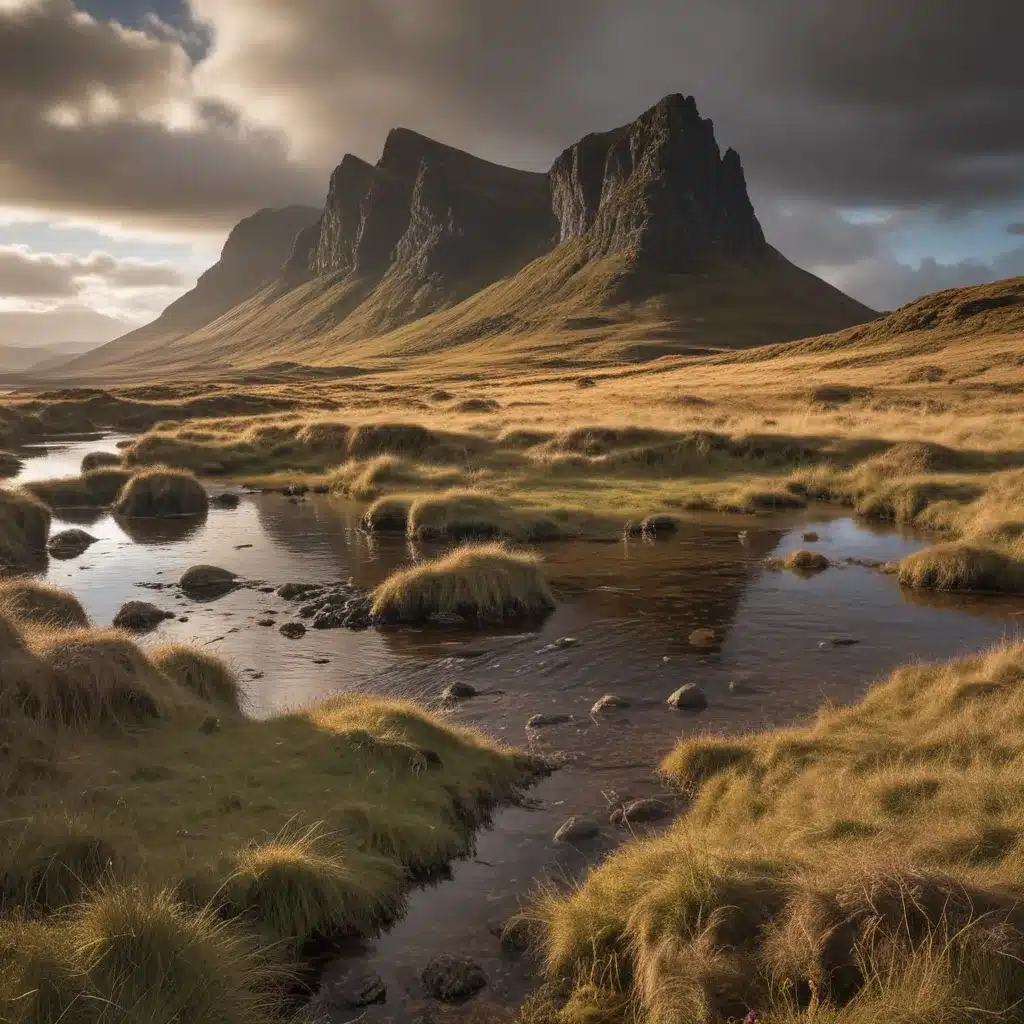
Chasing the Light in the Scottish Highlands
As I stand here, gazing out at the misty peaks of the Trossachs, I can’t help but feel a surge of excitement course through my veins. This is the moment I’ve been dreaming of – the chance to explore the breathtaking landscapes of Scotland and capture their essence through my lens.
You see, I’m not your average photographer. I’m a seeker of adventure, a chaser of light, and a collector of moments that leave an indelible mark on the soul. And when it comes to Scotland, well, let’s just say this rugged, ethereal land has been calling my name for as long as I can remember.
Mastering the Art of Composition
Now, I know what you’re thinking – composition, really? Isn’t that just a fancy term for arranging a bunch of shapes and lines in a pleasing way? Well, my friends, let me tell you, there’s so much more to it than that. Composition is the very foundation upon which a great photograph is built. It’s the difference between a snapshot and a work of art.
As I’ve traversed the dramatic landscapes of the Scottish Highlands, I’ve learned that mastering the art of composition is the key to capturing the true essence of these epic scenes. It’s about understanding the interplay of masses and lines, the balance of positive and negative space, and the subtle nuances that can make or break a shot.
Navigating the Masses and Lines
Let’s start with the basics, shall we? When I look through my viewfinder, I don’t just see mountains, lochs, and forests. I see shapes, textures, and lines that come together to create a visual symphony. These are the building blocks of a great composition.
The masses, for example, are the prominent elements in the frame – the mountains, the trees, the boulders that anchor the scene and draw the eye. They’re the anchors, the subjects that capture our attention. And then there are the lines – the pathways that lead the viewer through the frame, the curves and diagonals that add movement and rhythm.
As photographer Brad Carr explains, “The lines are what usually connects the masses and enhances the interplay between them, but sometimes there’s more to them: they can create a better sense of motion, flow and direction in an image, make it more dynamic and interesting.”
Balancing the Masses and Lines
Now, the key to a truly captivating composition is finding the right balance between these masses and lines. It’s about creating a sense of harmony, where each element complements the others and draws the viewer’s eye deeper into the frame.
As photography expert Erez Marom explains, “The masses are usually the discernable objects in the image, the composition’s anchors, so to speak. They are prominent, distinguished and differentiated from their surroundings by having different features (such as color, shape or texture), and serve a big part in drawing in the viewer’s eye.”
But it’s not just about the masses themselves – it’s about how they interact with the lines, creating a delicate balance that keeps the viewer engaged. “The lines are what usually connects the masses and enhances the interplay between them,” Marom adds, “but sometimes there’s more to them: they can create a better sense of motion, flow and direction in an image, make it more dynamic and interesting.”
Embracing the Unexpected
As I’ve explored the Scottish Highlands, I’ve learned that the best compositions often come when you least expect them. It’s about being open to the unexpected, embracing the serendipitous moments that arise when you least expect them.
As landscape photographer Erez Marom shares, “Some images only have masses. Some only have lines. Some have both, and these are usually the most interesting. It’s often quite easy to find the masses and lines in an image, especially after some practice and thought. But in some cases, masses and lines are harder to distinguish, and things are open to debate.”
It’s about being willing to step off the beaten path, to venture into the unknown, and to see the world through a fresh set of eyes. Because it’s in those moments of surprise and discovery that the most captivating compositions often reveal themselves.
Mastering the Craft, One Shot at a Time
of course, becoming a master of landscape composition isn’t something that happens overnight. It’s a journey of experimentation, practice, and a deep, abiding love for the art of photography.
As landscape photographer Thomas Heaton advises, “It’s not about having a fancy camera or the latest gear. It’s about training your eye, understanding the fundamentals of composition, and being willing to put in the hard work to develop your skills.”
And that’s exactly what I’ve been doing, day in and day out, as I’ve explored the rugged beauty of the Scottish Highlands. I’ve hiked countless miles, braved the elements, and pushed myself to see the world in new and unexpected ways. And with each shot I take, I feel a deeper connection to this magical land, a sense of belonging that transcends the boundaries of the frame.
Embracing the Journey
So, if you’re ready to embark on your own photographic adventure in the Scottish Highlands, I encourage you to embrace the journey. Forget about the “rules” of composition and instead, let your heart and your instincts guide you. Experiment, take risks, and be open to the unexpected.
Because when it comes to capturing the epic landscapes of Scotland, the true secret lies not in any set of rigid guidelines, but in the joy of the journey itself. So pack your gear, lace up your boots, and get ready to discover the beauty that lies waiting in every misty glen, every rugged peak, and every shimmering loch.
Who knows what masterpieces you might create along the way? The only way to find out is to start your adventure today.

